From Baekdusan (백두산) on North Korea’s border with China to Jeju Island’s Hallasan (한라산), Korea is home to thousands of magnificent mountains.
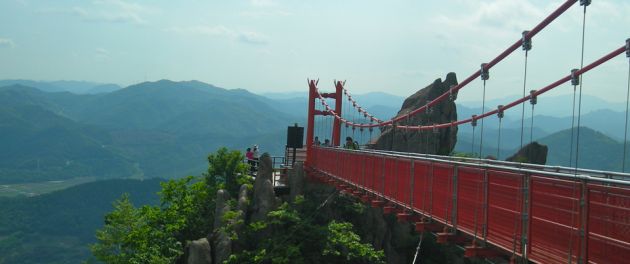
But while many of Korea’s mountains are grand, good things can also come in small packages. Case in point is hiking in Wolchulsan Mountain National Park (월출산국립공원) in South Jeolla Province.
At just 41 square kilometers, the national park is South Korea’s smallest.
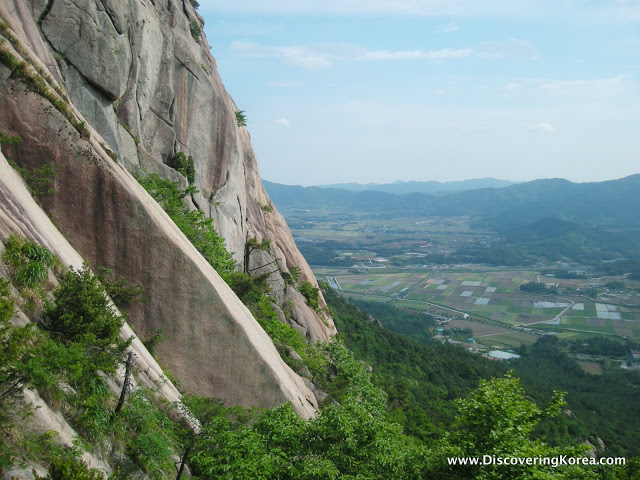
Wolchulsan National Park may be small, but it still feels impressive because the mountain rises dramatically from the flat farmlands of Gangjin and Yeongam counties. Wolchulsan means “mountain where the moon rises,” and if you’re lucky enough to see a moonrise or sunset over this mountain’s spectacular rock formations, it’s an unforgettable sight.
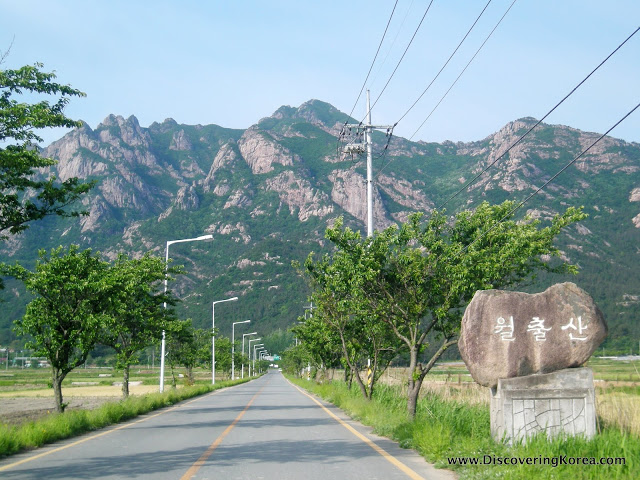
About 300,000 guests visit the park annually to enjoy its 16 kilometers of hiking trails and the spectacular views of the South Jeolla Province countryside.
The most popular route is a 9-kilometer trek from Cheonhwangsa (천황사) west to Dogapsa (도갑사). Along the way you’ll see temples, a field of reeds that’s especially picturesque during the fall, and three of Korea’s National Treasures, including #144, an 8-meter tall carving of a sitting Buddha.
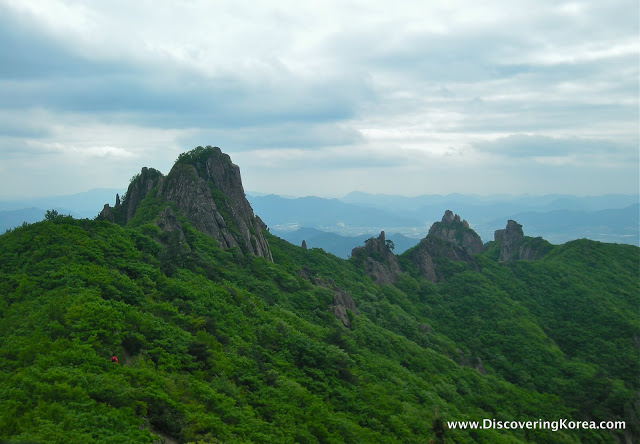
Keep going further and you might see a dragon… or at least legend has it that a dragon used to drink from some peculiar water-filled holes at Gujeolbong Peak (구정봉).
Dragon or no dragon, about 1.5 kilometers later you’ll reach Wolchulsan’s highest point, Cheonhwangbong peak (천황봉). Topping off at just under 809 meters, the summit offers gorgeous views of forested mountains, a patchwork of farms, and even the coastal waters off the cities of Mokpo and Gangjin.
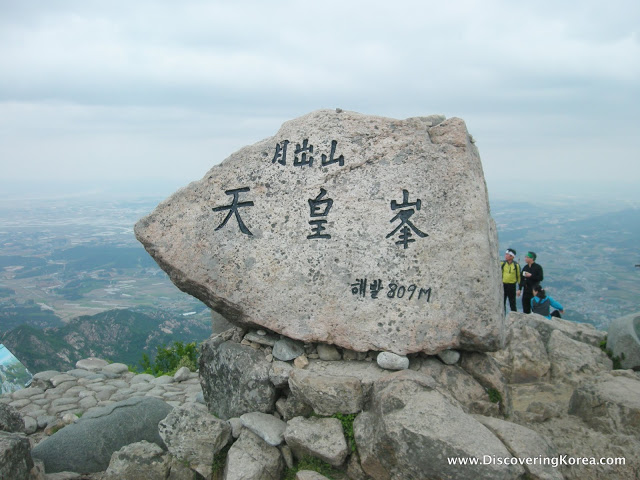
After enjoying the view, rather than going back the way you came, keep going northeast and 100 meters later you’ll pass through Tongcheonmun gate (통천문), a rocky tunnel that rewards hikers with a refreshing breeze.
Shortly after you’ll hit a fork in the trail. Go left to see the Baram Waterfall (바람폭포), or, better yet, go right to reach the dramatic Cloud Bridge. This 52-meter-long, orange suspension bridge connects two peaks.
At 120 meters high, it’s not for the faint of heart. But if you’re brave, run (or crawl) across, and then you’re only 2 kilometers from the base, where there are restaurants and even the nearby Wolchulsan Spa Resort. If you need a ride back to your car, frequent bus service is available.
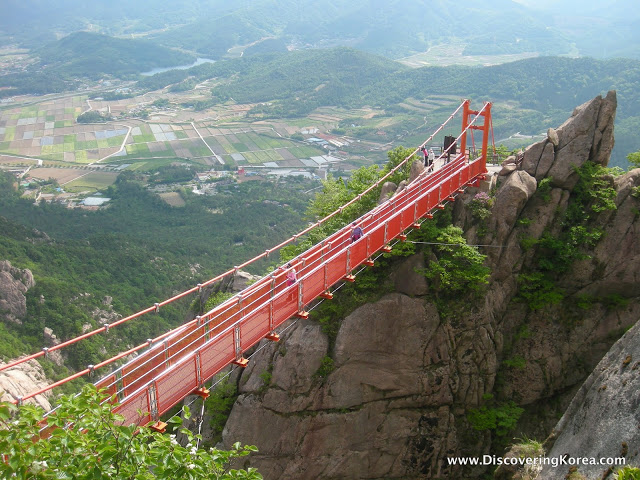
While my friend and I were just day hikers, hiking in Wolchulsan Mountain National Park is also popular among more serious hikers and even rock climbers. In fact, I was surprised to see two guys inching up a wall of rock, with just ropes, tools, skill and a little luck to keep them safe.
For nature lovers, while hiking be on the lookout for the Forest Wagtail (물레새), an olive, black and white-colored bird native to the Jeolla provinces that is named for the way it sways its tail from side to side.
However, beware of the Common Sundew, a bright red plant whose glistening drops of sugary sweetness lure unsuspecting prey into its leaves. Well, don’t worry too much, since this carnivorous plant only eats insects.

Whatever outdoor activity you’re looking for, next time, consider hiking in Wolchulsan Mountain National Park, located just one hour south of Gwangju (광주시) in Korea’s beautiful southwestern Honam region.
Who knows? If you’ve got time to spare, consider a side trip to Korea’s green tea mecca, Boseong (보성), or maybe to the Korean Peninsula’s southern-most spot, Ddangkkeut (땅끝)?
For Your Information..
| Open: | Generally open sunrise to sunset |
| Admission Price: | Parking fees range between 2,000-7,500, depending on vehicle size and season. Campsites run 800-2,000 won per person, depending on age and season. |
| Address: | South Jeolla Province, Yeongam-gun, Yeongam-eup, Gaesin-ri 484-50 |
| Directions: | From Seoul, express buses directly serve Yeongam, or go first to Gwangju and transfer to Yeongam. |
| Phone: | +82 61-473-5210 |
| Website: | Official Site |
About Matt Kelley
Matt Kelly is native of the US Pacific Northwest and is half-Korean by ethnicity. He lived in Korea for five years and has written hundreds of travel guides for Wallpaper, TimeOut, the Boston Globe and Seoul Magazine and was a host for several different variety shows on Korean radio and television.
